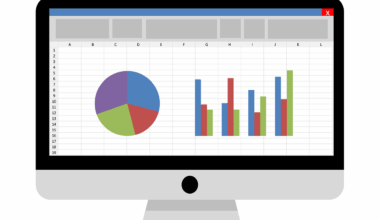Writing Clear Installation Guides for Financial Software Product Launches
When launching new financial software, creating a clear installation guide is crucial for enhancing user experience. Effective guides not only instill confidence but also reduce support queries. Start by understanding your audience; determine their technical knowledge level. Begin with comprehensive prerequisites such as hardware or software dependencies necessary for installation. Include explicit instructions ranging from downloading the software to configuring settings for first-time users. Consider using a step-by-step approach, supplemented with visuals to make the process more digestible. Visuals, such as screenshots and diagrams, can greatly aid comprehension by illustrating complex steps. Furthermore, consider adding a troubleshooting section dedicated to common installation problems, enabling users to resolve issues independently. Additionally, using a clear and concise writing style can significantly improve the quality of your documentation. Avoid jargon or complex terms that may confuse users. Instead, opt for simple language and direct instructions. This ensures that the guide is accessible to a wider audience, including those not technologically savvy. Furthermore, keep the formatting consistent to enhance readability and comprehension. Using bullet points and numbered lists can also help users follow the guide effortlessly.
Another effective strategy includes soliciting feedback from beta testers before launching the guide publicly. Their insights can highlight potential gaps or areas of confusion in the instructions. Encourage testers to provide specific feedback on clarity and ease of use, making revisions based on their experiences. It may also be beneficial to conduct usability testing, observing how users interact with the guide while completing the installation. This firsthand observation can uncover challenges that may not be evident through written feedback alone. Furthermore, maintaining an interactive element in your installation guide through FAQs or interactive help sections can transform the guide into a valuable resource. Users appreciate having the ability to search for their specific questions or issues. Additionally, consider incorporating context-sensitive help, where users receive assistance relevant to the task they are currently undertaking during installation. This can prevent frustration and enhance the overall user experience. Lastly, ensure that your installation guide is easily accessible across multiple platforms; being available in PDF form, on your website, or within the software itself is crucial for convenience. Ensuring users can access the guide whenever they need it increases its effectiveness.
Best Practices for Documentation
Implementing best practices in writing your installation guides is essential to crafting valuable resources for users. For technical documentation, start with a well-structured outline that logically organizes content. Divide the guide into clear sections, making it easier for users to navigate. Include a table of contents at the beginning, allowing quick access to specific topics and technical areas. Another best practice includes writing in a user-oriented tone, focusing on what users will need to do step-by-step rather than what the software does. This will help maintain engagement, as users are interested in the installation process itself. Furthermore, utilizing consistent terminology throughout the guide is crucial in avoiding confusion. For instance, if you refer to a specific feature or component, stick with that term rather than using synonyms. It helps users remain focused without having to decode varying terminology. Additionally, it’s vital to conduct regular reviews of the documentation, updating it whenever software changes occur. Such diligence ensures the information remains current and relevant. Lastly, continually analyze user feedback to refine future guides, improving clarity and usability based on real-world use cases.
Moreover, consider including a section dedicated to system requirements at the start of your installations guide. This sets clear expectations for the user, informing them about the specifications their systems must meet before installation. Users appreciate knowing whether their current hardware and software are suitable. Incorporate a checklist format to help users verify their systems effortlessly. This added clarity may prevent frustration later in the process when users attempt installation, only to encounter compatibility issues. Furthermore, you may also wish to include performance tips within the guide. Providing helpful suggestions for optimizing the software post-installation can enhance user satisfaction. When users see that you care about their entire experience, they may develop a more positive view of your organization. Additionally, don’t overlook the importance of language accessibility. Where possible, offer the installation guide in multiple languages or include language options, catering to a more diverse user base. This inclusivity can significantly broaden your audience and improve overall usability. Lastly, ensure you use clear formatting; bullet points and paragraph breaks should divide information logically, enhancing readability for users.
Engaging with Users
Engaging actively with users about their installation experiences is an invaluable method of improving your guidance documentation. To facilitate this, introduce feedback mechanisms within the installation guide itself, such as links to surveys or direct contact information. Ask users to share challenges they faced during installation and suggestions for additional clarity. These insights can provide genuine recommendations for enhancing documentation relevance. Encouraging user-generated content, such as comments or questions, can also build a sense of community among users. Consider creating a dedicated forum for troubleshooting installation problems, where users can share solutions. Enabling users to connect cultivates a positive environment around your software. Furthermore, integrating social media or chat support options into the installation experience allows immediate communication for issues that arise. Users appreciate the accessibility of assistance, which ultimately leads to a more successful installation process. Another strategy might involve follow-up communications post-launch, where you send out updated guides or tips based on initial feedback received from users. Automated emailing systems can be designed to facilitate this without excessive effort. Maintaining an open line of communication with users empowers them to take charge of their installation journey.
Finally, it’s essential to review the effectiveness of your installation documentation continually. Tracking user engagement metrics, such as the number of page views, time spent on the guide, and user feedback, can offer invaluable insights into its performance. Consider utilizing analytics tools to assess which sections users frequently revisit or struggle to comprehend. Such analysis can inform you on areas requiring strengthening or revision. Pay attention to common queries and adjust your guide accordingly, providing clearer instructions. Additionally, keep abreast of new software developments to ensure that the guide stays relevant with each update. As financial software evolves or new features are integrated, your documentation must reflect these changes to avoid outdated instruction. Consequently, implementing an ongoing review process can become part of your development lifecycle. Regularly schedule team meetings focusing solely on documentation refinement to maintain high standards. Consider promoting culture within your organization that emphasizes the value of clear communication in all forms. This philosophy will not only improve your documentation but enhance overall product launches across different software initiatives, leading to improved customer satisfaction.
Conclusion
In conclusion, writing clear installation guides for financial software product launches is essential to user satisfaction and overall success. The significance of well-crafted documentation cannot be overstated; when users understand how to navigate software installations seamlessly, they are more likely to adopt and use your product fully. Emphasizing clarity, consistent terminology, and proper structure ensures users can easily understand the instructions. Furthermore, fostering engagement and soliciting feedback allows for continuous improvement in your guides. Listening to your users enables you to align your documentation with their needs effectively. Staying current with software updates ensures your guides remain relevant, enhancing user trust and reducing frustration during installation. Establishing accessibility across multiple platforms and formats enhances the reach and ease with which users can interact with the documentation. Innovation and community engagement further create lasting relationships around your product and brand. Ultimately, investing time and effort in creating robust installation guides is undoubtedly worthwhile. Such guides not only reflect the quality of the software product itself but also enhance the overall user experience, promoting loyalty and advocacy for your financial software in an increasingly competitive market.
By implementing these practices, your organization can transform installation guides from simple documents into valuable tools that facilitate adoption and satisfaction. Offering comprehensive yet concise guides leads users through potential hurdles with ease, ultimately establishing a positive relationship from the outset of their engagement with your software. Consider sharing success stories related to installations within your documents, as this can inspire confidence through relatability. Additionally, treat your installation guide as a living document; evolving it based on emerging best practices and user feedback continually cultivates a responsive approach to user documentation. Finally, ensure that all changes are documented, offering transparency in how the guide progresses. This instills confidence among users that their feedback is being heard. Such approaches fundamentally enhance the installation experience while cultivating customer loyalty to your brand and fostering trust. Knowledge-based engagement allows for smoother product launches and sets the stage for a supportive relationship with end-users. Through thoughtful planning and execution, the impact of well-structured installation guides can resonate throughout the lifecycle of your financial software, ultimately defining its long-term success.


